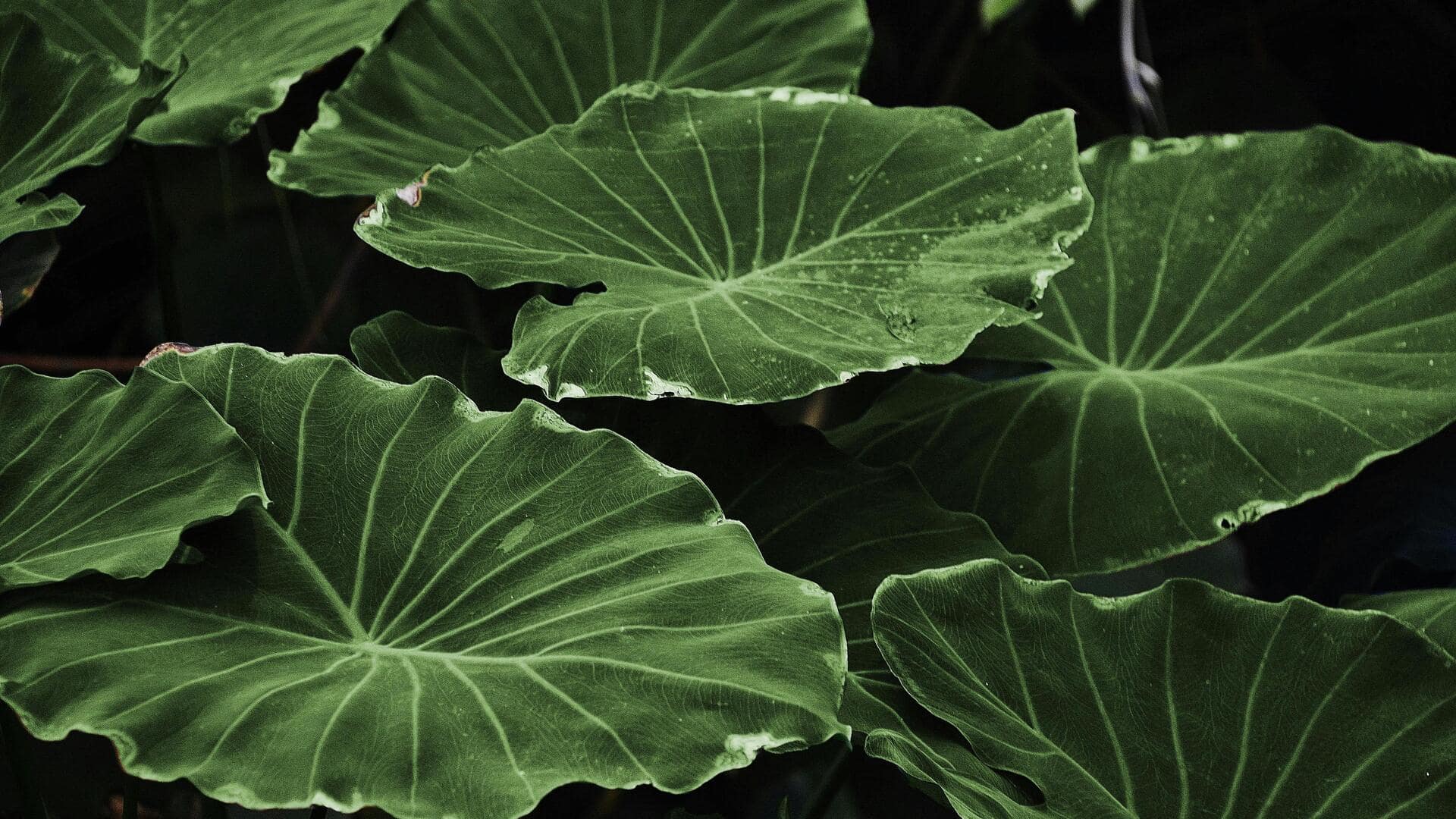
African dishes that turn colocasia leaves into pure magic
What's the story
Colocasia leaves, popularly known as taro leaves, are a staple in many African cuisines. These versatile leaves are not just nutritious but also add a unique flavor to various dishes. Rich in vitamins and minerals, colocasia leaves can be prepared in numerous ways to create delicious meals. Here are five African dishes that make the most of these remarkable leaves.
Dish 1
Nigerian efo riro with colocasia leaves
Efo riro is a popular Nigerian vegetable soup that is usually prepared with spinach or other leafy greens. In this version, colocasia leaves are used to add distinct flavor and texture to the dish. The colocasia leaves are cooked with tomatoes, peppers, onions, and spices to make a hearty soup. It can be served with rice or fufu.
Dish 2
Ghanaian palava sauce using colocasia leaves
Palava sauce is a traditional Ghanaian dish that combines vegetables and spices for a flavorful meal. By adding colocasia leaves into the mix, the dish gets an earthy flavor that goes well with the other ingredients. The sauce usually has tomatoes, onions, and chili peppers cooked together to make a rich sauce. It can be eaten with plantains or yams.
Dish 3
Congolese Mbanga soup with colocasia leaves
Mbanga soup is a Congolese specialty that uses palm oil as its base. By adding colocasia leaves, the soup gets an extra layer of flavor and nutrition. The soup is made by simmering colocasia leaves with okra, tomatoes, and spices until everything is well-blended into a thick broth. It is usually served hot as part of a main meal.
Dish 4
Cameroonian Ndole using colocasia leaves
Ndole is another Cameroonian classic that usually uses bitter leaf or spinach as its main green component. But when colocasia leaves are used instead, it gives a different taste profile while retaining the essence of this beloved dish. The preparation involves cooking colocasia leaves with groundnuts (peanuts), garlic, and other seasonings for an appetizing stew-like consistency.
Dish 5
Tanzanian mchicha wa nazi with colocasia leaves
Mchicha wa nazi hails from Tanzania, where it is commonly prepared using amaranth or similar greens cooked in coconut milk. However, substituting colocasia leaves gives this traditional recipe an exciting twist without compromising on nutrition or taste. The creamy texture from coconut milk blends beautifully with the earthy notes from the colocasia, making it an irresistible side dish to any meal.